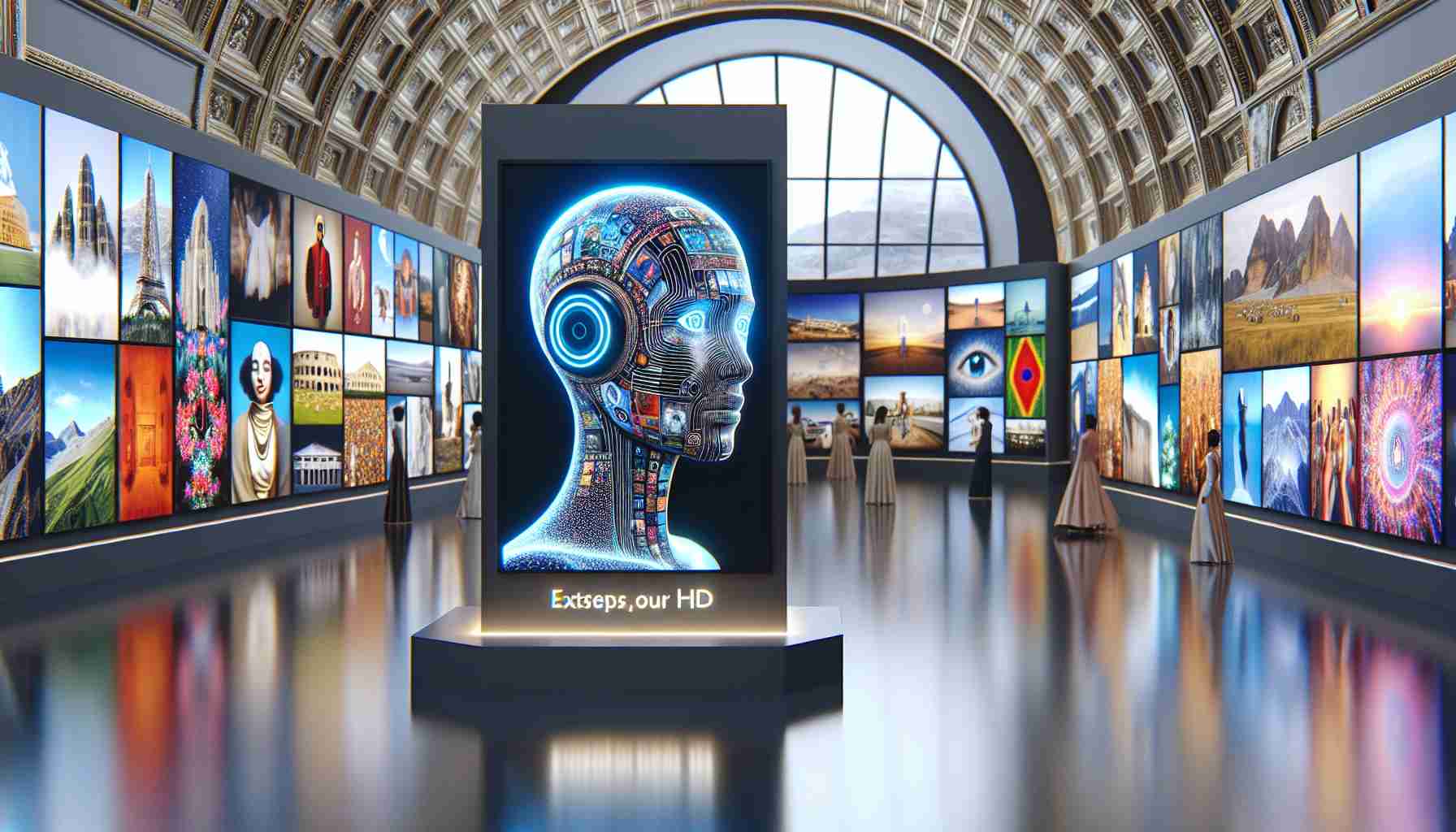- The Photo Brussels festival showcases the intersection of art and artificial intelligence, highlighting innovative projects that utilize AI in creative ways.
- Curator Michel Poivert presents works that explore the complexities and challenges of “promptography” in photography.
- Artists like Pascal Sgro and Brodbeck and de Barbuat tackle themes of nostalgia and bias in AI-generated imagery.
- Claudia Jaguaribe and Alexey Yurenev focus on honoring heritage and untold stories through their AI art explorations.
- The festival encourages viewers to reconsider the role of AI in art, suggesting it can enhance creativity rather than merely threaten traditional artistry.
Step into the fascinating world of the Photo Brussels festival, where artists boldly embrace the intriguing possibilities of artificial intelligence. Set in the vibrant Hangar gallery, this year’s exhibition, curated by photography academic Michel Poivert, showcases 17 innovative projects that explore the creative power and pitfalls of “promptography.”
Among the highlights is Pascal Sgro’s Cherry Airlines, an imagined flight back to the luxurious 1950s. His AI-crafted images provoke thoughts about nostalgia and its stark environmental costs, inviting viewers to reflect on the paradoxes of progress.
The duo Brodbeck and de Barbuat dive deep into AI’s quirks with their series Une Histoire Parallele, which reveals flaws in historical image representations. Their work exposes biases in data as they recreate iconic photographs, showing how AI struggles with nuanced identities and gender portrayal.
Claudia Jaguaribe uses AI to honor unsung heroines in Brazil, visualizing the life of her ancestor, Bárbara de Alencar, through vivid portraits that resemble stamps and postcards. Similarly, Alexey Yurenev explores family history by creating AI-generated imagery that invokes powerful narratives among WWII veterans, rediscovering untold stories of heroism.
Then there’s Robin Lopvet, who combines nostalgia and technology in his playful reimaginings of 20th-century New York photography, questioning whether art can merely reflect reality or reimagine it.
This thrilling festival offers a mesmerizing blend of traditional and modern artistry, ensuring there’s something for everyone to savor. The key takeaway? AI isn’t just a threat; it can be a powerful tool for creativity, shedding light on our past while redefining our present.
Unlocking the Future: How AI Transforms Artistic Vision at Photo Brussels Festival
Exploring the Photo Brussels Festival: A New Era of AI-Infused Art
The Photo Brussels festival is an exhilarating showcase that merges art with cutting-edge technology, specifically artificial intelligence (AI). This year, at the Hangar gallery, the exhibit, masterfully curated by photography academic Michel Poivert, features 17 groundbreaking projects that illuminate both the creative potential and the challenges posed by “promptography”—the art of generating images using AI prompts.
Highlights and Innovations in the Exhibition
One of the most significant projects is Pascal Sgro’s Cherry Airlines, which transports viewers to the opulent 1950s through evocative AI-generated visuals. His work raises critical questions about nostalgia and its environmental implications, sparking dialogues about the paradoxes inherent in technological advancement.
The artistic duo of Brodbeck and de Barbuat challenges normative representations in their series Une Histoire Parallele. Their artwork uncovers the biases embedded in historical narratives, illustrating how AI’s interpretation often falters when depicting complex identities and gender roles.
Claudia Jaguaribe takes a poignant approach by utilizing AI to celebrate the contributions of overlooked women in Brazilian history. Her portraits of her ancestor, Bárbara de Alencar, embody a blend of personal heritage and collective memory, crafted with a style reminiscent of stamps and postcards. In a similar vein, Alexey Yurenev focuses on family legacies, bringing to life the stories of WWII veterans through narratives enabled by AI-generated imagery.
Moreover, Robin Lopvet utilizes a playful take on nostalgia and technology to question the role of art in capturing or reconstructing reality, particularly through imagery reflecting 20th-century New York.
This year’s festival encapsulates the seamless convergence of traditional artistry with modern techniques, showcasing the capacity of AI not merely as a threat but as an invaluable tool for creative exploration and self-discovery.
Key Questions and Answers
1. What are the key impacts of AI on the art world as highlighted in the festival?
AI is redefining artistic boundaries, allowing artists to recreate historical moments, examine biases, and draw connections between past and present narratives. It serves both as a technique for generating art and a medium for deeper introspective discussions on societal values and representations.
2. How does ‘promptography’ differ from traditional photography?
Promptography represents a significant shift from traditional photography by utilizing AI to generate images based on textual prompts rather than capturing real-world scenes. This process opens pathways for artists to manipulate visuals and context, leading to innovative interpretations of reality.
3. Can AI-generated art have historical significance, and in what ways?
Yes, AI-generated art can carry historical significance. By reinterpreting past events and figures through the lens of technology, artists can reveal forgotten narratives and challenge prevailing historical accounts. This approach invites dialogue around representation and the evolving understanding of history.
Suggested Links
– Photo Brussels Festival
– AI Art Insights
– Creative AI Exploration
The Photo Brussels festival not only serves as a celebration of art and technology but also pushes the boundaries of how we understand creativity in our digital age.
